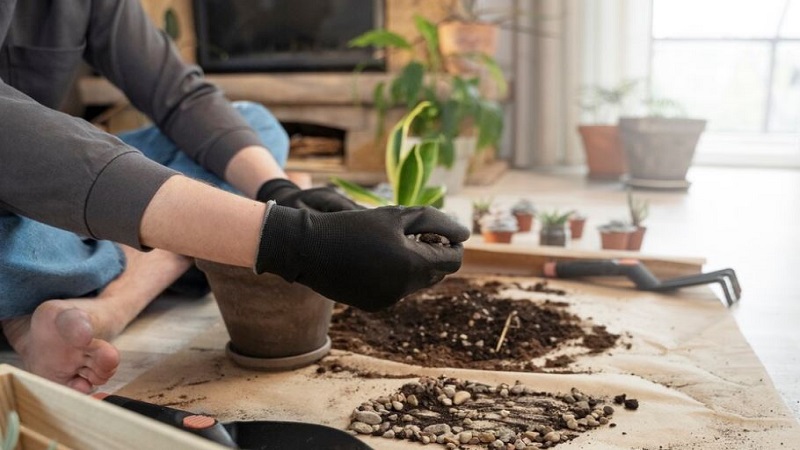Creating a sustainable landscape involves more than selecting the right plants; it also requires effective soil drainage to ensure a healthy, thriving garden. Poor drainage can lead to waterlogged soil, root rot, and plant diseases, while sustainable drainage solutions help manage excess water, promote infiltration, and prevent erosion. Here are practical tips provided by Selsource, a leader in drainage solutions, for homeowners and gardeners on improving soil drainage sustainably.
Amending Soil with Organic Matter
One of the most effective ways to improve soil drainage is by amending it with organic matter. Organic materials like compost, aged manure, and leaf mould improve soil structure, enhance aeration, and increase water infiltration. These amendments help create a looser, more crumbly soil texture, allowing water to pass through more easily.
To amend your soil, spread a 2-3 inch layer of organic matter over the soil surface and mix it in thoroughly to a depth of about 6-8 inches. This process should be done annually or biannually to maintain optimal soil conditions. Over time, the organic matter will decompose and continue to benefit the soil, providing essential nutrients and improving drainage.
Creating Swales
Swales are shallow, vegetated ditches that capture and redirect runoff, allowing it to infiltrate the soil slowly. They are an excellent solution for sustainably managing excess water. Swales can be designed to blend seamlessly into the landscape, often planted with native grasses and other vegetation to enhance their functionality and aesthetic appeal.
To create a swale, start by digging a shallow trench along the contour of the land where water tends to accumulate. Line the swale with a layer of gravel or stones to facilitate drainage and prevent erosion. Then, fill the trench with a mixture of topsoil and organic matter, and plant it with deep-rooted, water-tolerant vegetation. This vegetation will help stabilise the soil and further promote water infiltration.
Using Mulch
Mulching is a simple yet effective method of improving soil drainage and reducing runoff. It helps retain soil moisture, regulate soil temperature, and prevent erosion. Mulch also adds organic matter to the soil as it decomposes, improving soil structure and drainage over time.
Apply a 2-4 inch layer of organic mulch, such as wood chips, straw, or shredded leaves, around plants and over bare soil. Keep the mulch a few inches away from plant stems to prevent rot. Mulching enhances soil drainage, suppresses weeds, and adds visual appeal to your garden.
Installing Drainage Solutions
Installing drainage solutions such as French drains or dry wells can be highly effective in areas with particularly poor drainage. A French drain consists of a perforated pipe buried in a gravel-filled trench that redirects excess water away from problem areas. This system allows water to flow through the pipe and disperse into a designated drainage area.
To install a French drain, dig a trench from the area with poor drainage to a lower-lying area or drainage pit. Line the trench with landscape fabric to prevent soil from clogging the drain, then place the perforated pipe in the trench and cover it with gravel. Cover the gravel with more landscape fabric and fill the trench with topsoil.
Dry wells are another option for managing excess water. These underground structures collect and slowly release runoff into the surrounding soil, preventing surface water accumulation. Dry wells are typically filled with gravel or other aggregate materials to facilitate drainage.
Utilising Sustainable Drainage Products
Incorporating sustainable drainage products into your landscape can greatly enhance your soil drainage efforts. These products, such as permeable pavers, rainwater harvesting systems, and green roof components, are designed to manage stormwater effectively and sustainably. Permeable pavers allow water to infiltrate the ground, reducing runoff and promoting groundwater recharge. Rainwater harvesting systems capture and store rainwater for later use, reducing the demand on municipal water supplies. Green roofs absorb and filter rainwater, reducing the volume of runoff and providing additional insulation for buildings.
Using these products improves soil drainage and contributes to the overall sustainability and resilience of your landscape.
Improving soil drainage is a crucial aspect of building a sustainable landscape. Homeowners and gardeners can effectively manage excess water and promote a healthy, thriving garden by amending soil with organic matter, creating swales, using mulch, installing drainage solutions, and incorporating sustainable drainage products. These sustainable practices not only enhance soil drainage but also contribute to environmental conservation and the long-term success of your landscape.
